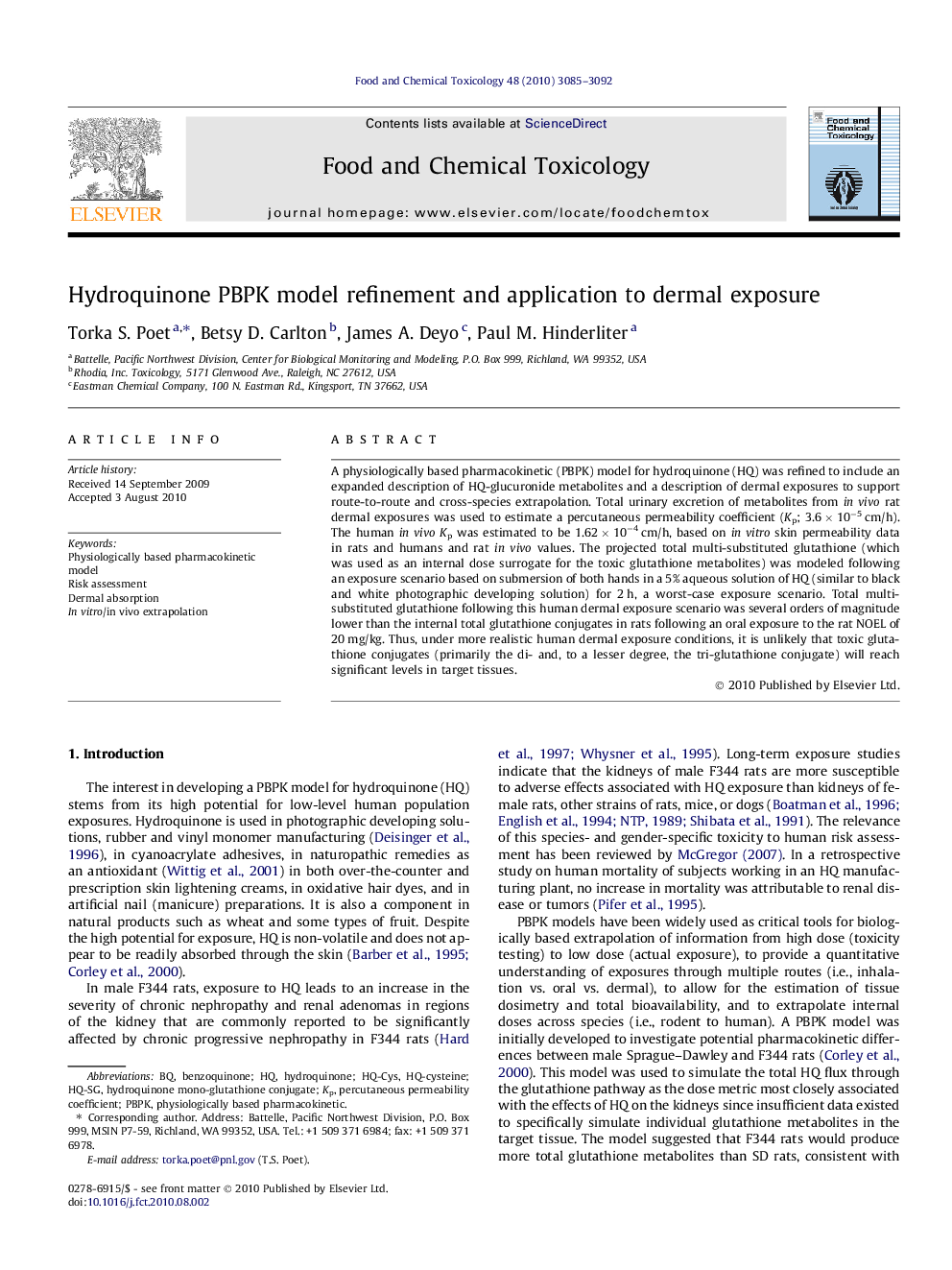| کد مقاله | کد نشریه | سال انتشار | مقاله انگلیسی | نسخه تمام متن |
|---|---|---|---|---|
| 2585772 | 1130880 | 2010 | 8 صفحه PDF | دانلود رایگان |

A physiologically based pharmacokinetic (PBPK) model for hydroquinone (HQ) was refined to include an expanded description of HQ-glucuronide metabolites and a description of dermal exposures to support route-to-route and cross-species extrapolation. Total urinary excretion of metabolites from in vivo rat dermal exposures was used to estimate a percutaneous permeability coefficient (Kp; 3.6 × 10−5 cm/h). The human in vivo Kp was estimated to be 1.62 × 10−4 cm/h, based on in vitro skin permeability data in rats and humans and rat in vivo values. The projected total multi-substituted glutathione (which was used as an internal dose surrogate for the toxic glutathione metabolites) was modeled following an exposure scenario based on submersion of both hands in a 5% aqueous solution of HQ (similar to black and white photographic developing solution) for 2 h, a worst-case exposure scenario. Total multi-substituted glutathione following this human dermal exposure scenario was several orders of magnitude lower than the internal total glutathione conjugates in rats following an oral exposure to the rat NOEL of 20 mg/kg. Thus, under more realistic human dermal exposure conditions, it is unlikely that toxic glutathione conjugates (primarily the di- and, to a lesser degree, the tri-glutathione conjugate) will reach significant levels in target tissues.
Journal: Food and Chemical Toxicology - Volume 48, Issue 11, November 2010, Pages 3085–3092